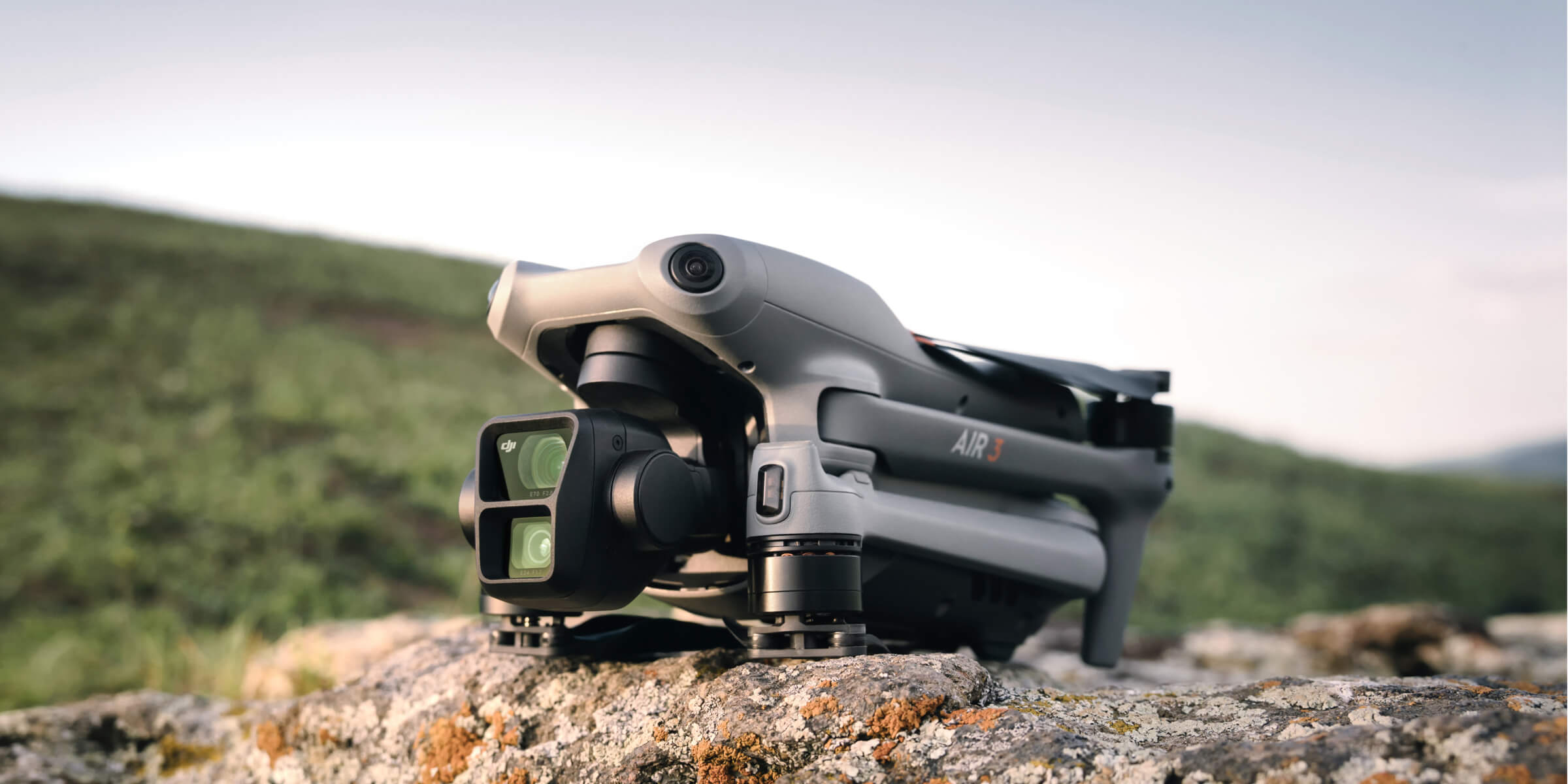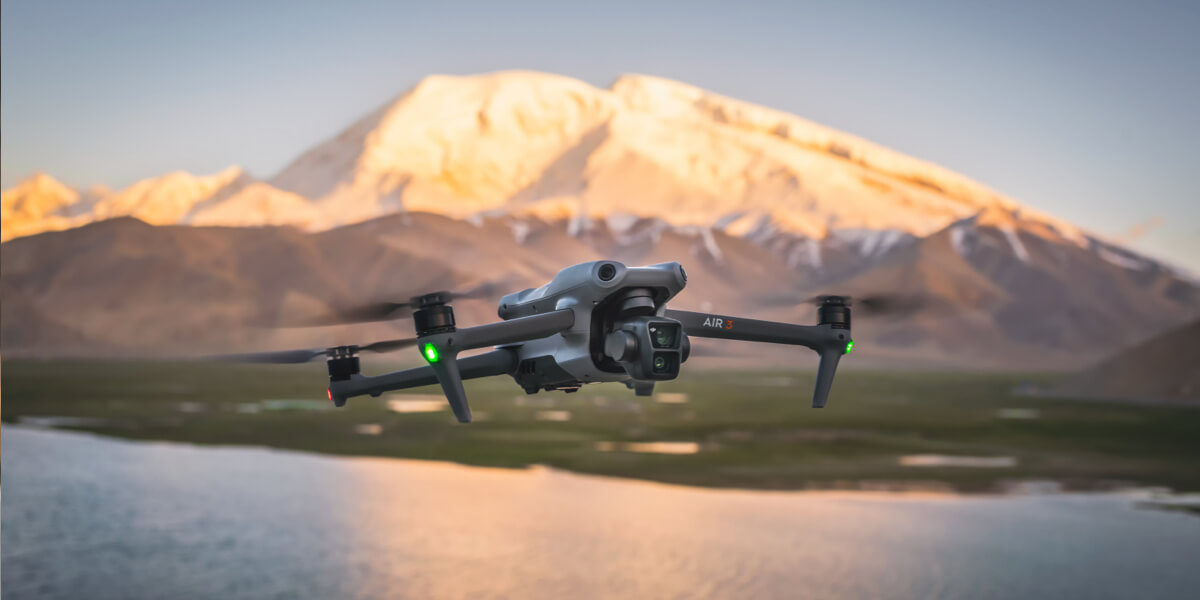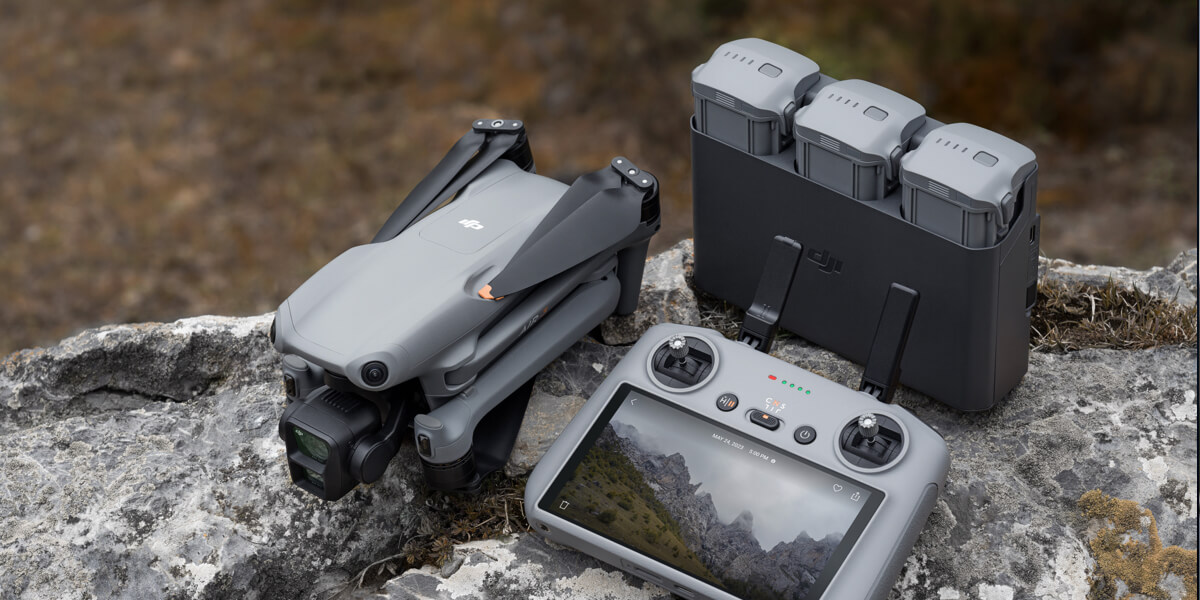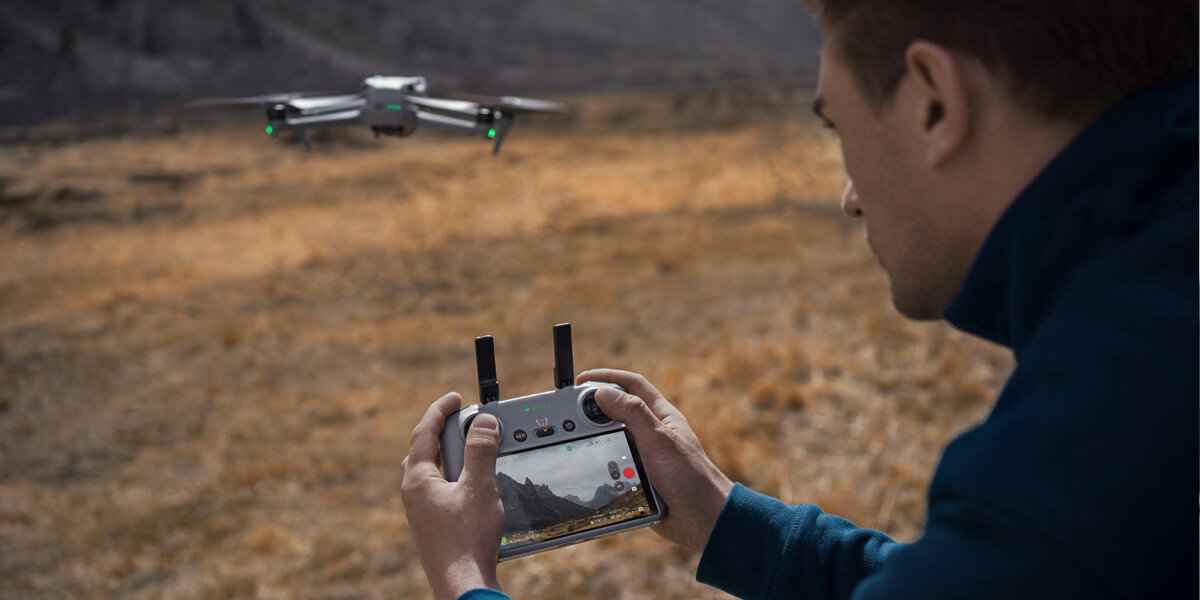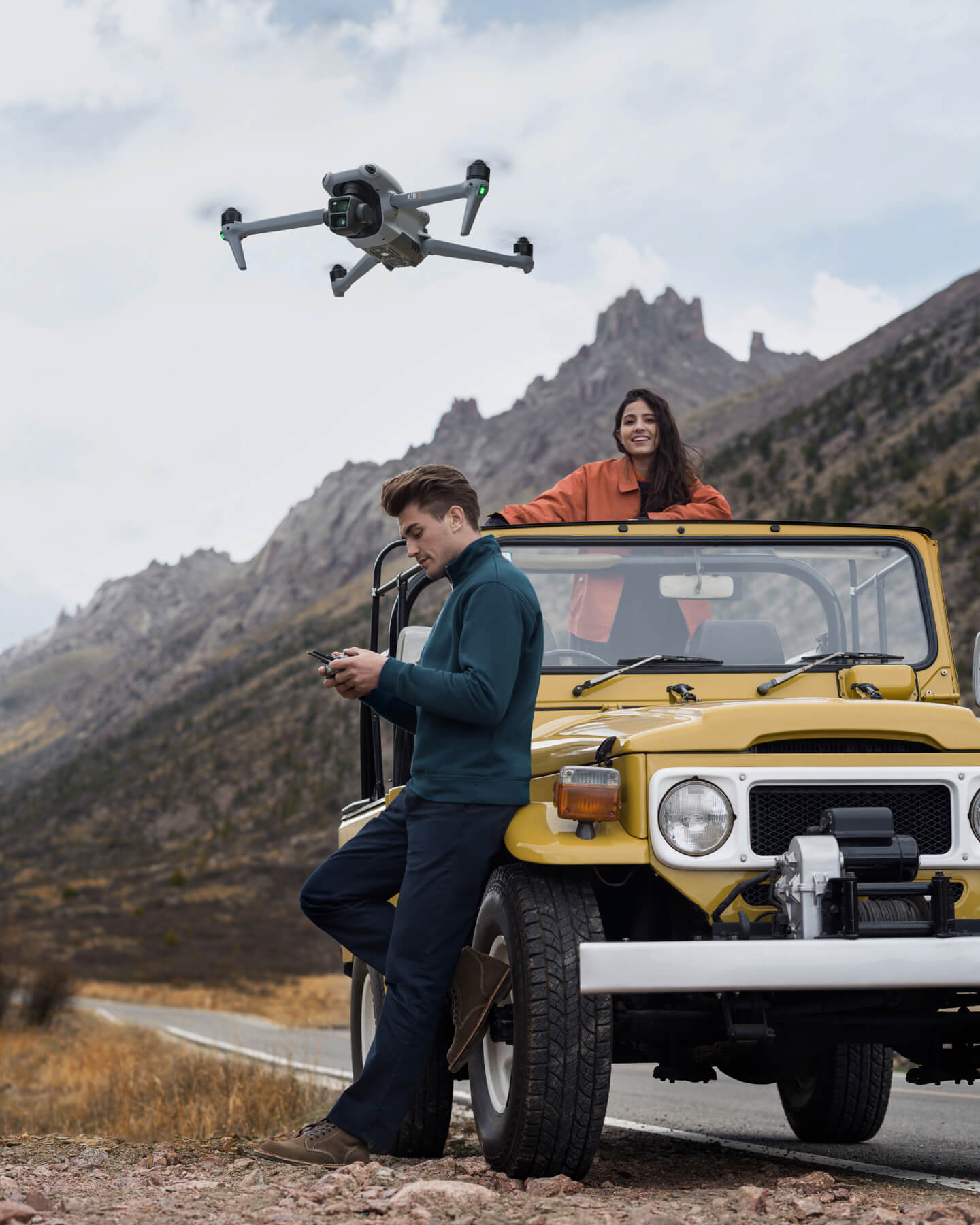
DJI Air 3 vs Air 2S vs Mini 3 Pro: which one should I choose
Shop DJI Air 3Camera drones have become a must-have companion for travelers. Whether you use them to capture landmarks, epic scenery, or just your random daily moments, they provide a stunning perspective of any adventure.
With the recent release of DJI Air 3, there are even more excellent options to choose from. But which drone is the right choice for you? What upgrades does Air 3 have compared to Air 2S and Mini 3 Pro?
In this article, we will compare DJI Air 2S, Mini 3 Pro, and the new DJI Air 3 in all of the key ways, helping you make an informed decision.
Design and Portability
|
720 g |
< 249 g |
595 g |
|
Folded: 207×100.5×91.1 mm (L×W×H) |
Folded: 145×90×62 mm (L×W×H) |
Folded: 180×97×77 mm (L×W×H) |
When it comes to design and portability, the Mini 3 Pro takes the lead. As the name suggests, it is incredibly compact and lightweight at just 249 grams, making it a highly portable and easy-to-carry drone.
But while Air 3 is slightly larger and heavier, it still remains relatively portable compared to other drones in its class.
Camera Performance
|
1/1.3″ CMOS Wide-Angle Camera 1/1.3″ CMOS 3x Medium Tele Camera |
1/1.3'' CMOS |
1'' CMOS |
|
4K/100fps |
4K/60fps |
5.4K/30fps |
|
48 MP |
48 MP |
20 MP |
|
D-Log M/HLG |
D-Cinelike |
Normal |
The camera performance is where the DJI Air 3 shines. Air 3 boasts the first dual-primary camera system of the Air series, embedding a 1/1.3-inch-CMOS wide-angle camera and a 1/1.3-inch-CMOS 3x medium tele camera in a sleek and compact body. The two cameras have the same sensor size but different focal lengths, delivering consistent image quality and more dynamic imaging possibilities.
Both cameras possess the capability to produce stunning 48MP photos that showcase intricate details, providing a lifelike visual experience and allowing for effortless post-production cropping, if you need it.
Air 3's two 1/1.3-inch CMOS sensors also enable support for dual native ISO and direct output of 4K/60fps HDR video, all without cropping. As a result, the footage captured by either camera boasts vibrant colors, smooth transitions in lighting, and delivers breathtakingly accurate visuals that are sure to captivate any viewer.
Equipped with a 1-inch image sensor and large 2.4μm pixels, DJI Air 2S is capable of capturing stunning details, but with just one camera, the dynamic shots offered with Air 3 are simply not possible.
While the Mini 3 Pro offers respectable camera capabilities, its smaller sensor limits its overall image quality.
Flight Performance
|
46 mins Max Flight Time |
47 mins Max Flight Time |
31 mins Max Flight Time |
|
Omnidirectional Obstacle Sensing |
Tri-Directional Obstacle Sensin |
Obstacle Sensing in 4 Directions |
|
DJI O4 20km,1080p/60fps Transmission |
DJI O3 12km, 1080p/30fps Transmission |
DJI O3 12km, 1080p/30fps Transmission |
All three drones offer impressive flight performance, but there are some differences to consider. Air 3 features obstacle sensing in all directions, ensuring a more safe flight experience. It also offers an extended max flight time of 46 minutes, giving you more time to explore, plan shots, and execute.
Mini 3 Pro, while not lacking in performance, does not have obstacle sensing on all sides.
Featuring an innovative power transfer function, Air 3's new battery charging hub revolutionizes the charging experience.
By simply pressing and holding the function button, you can transfer the remaining power from multiple batteries to the battery that has the highest remaining power. This smart feature ensures that you have a more fully charged battery, which is super useful if you're trying to get one more full flight in scenarios where charging options are limited.
Another powerful upgrade of Air 3 is video transmission. The next-gen O4 video transmission provides a max range of 20 km with increased stability, and a 1080p/60fps max-quality live feed to ensure ultra-smooth viewing.
Intelligent Features
|
ActiveTrack 5.0 |
ActiveTrack 4.0 |
ActiveTrack 4.0 |
|
MasterShots |
MasterShots |
MasterShots |
| Waypoint |
/ |
/ |
|
/ |
Vertical Shooting |
/ |
All three drones come equipped with intelligent flight features that enhance the overall user experience. These include ActiveTrack, which allows the drone to automatically track and follow a subject, and MasterShots, which offer creates professional-level videos with minimal effort.
One standout feature of the Mini 3 Pro is true vertical shooting, where the gimbal can physically rotate 90 degrees to capture footage that is formatted for social media without the need for cropping or resizing.
For the first time ever, the Waypoint feature is now available on the Air series. Plan flight routes and shooting actions for Air 3 in advance to achieve difficult camera movements and stunning one-takes. You can also save flight routes to repeat the same movement with precision at a later time or date, opening the door to long-duration timelapse shots that capture transitions like day to night or season to season.
Air 3 offers a big upgrade in ActiveTrack performance thanks to the new ActiveTrack 5.0, which gives users a wider range of creative possibilities. Utilizing cutting-edge subject-recognition technology, ActiveTrack 5.0 employs multiple vision sensors simultaneously to identify and distinguish subjects from surrounding objects, effectively locking the subject within the frame.
This advanced tracking feature allows for seamless adjustments of tracking angles, which delivers smoother and more natural-looking results. Additionally, thanks to its enhanced environment and subject-sensing algorithms, DJI Air 3 promptly responds to subject movements and environmental cues, strategically planning an optimal tracking route.
Remote Controller
|
RC 2 |
RC |
RC |
Air 3 is compatible with the updated DJI RC 2. Compared with DJI RC, the performance of the DJI RC 2 is dramatically improved for smoother overall operation. The video transmission solution has been upgraded, and the antenna system has been upgraded from 1T2R to 2T4R.
With DJI Air 3, O4 video transmission can be used. DJI RC 2 features two built-in antennas and two external antennas, and allows angle adjustments for the external dual antennas to achieve optimized video transmission effects.
Price
Price is often a deciding factor for many consumers. The Mini 3 Pro is the more budget-friendly option, making it suitable for beginners or those looking to limit their spending.
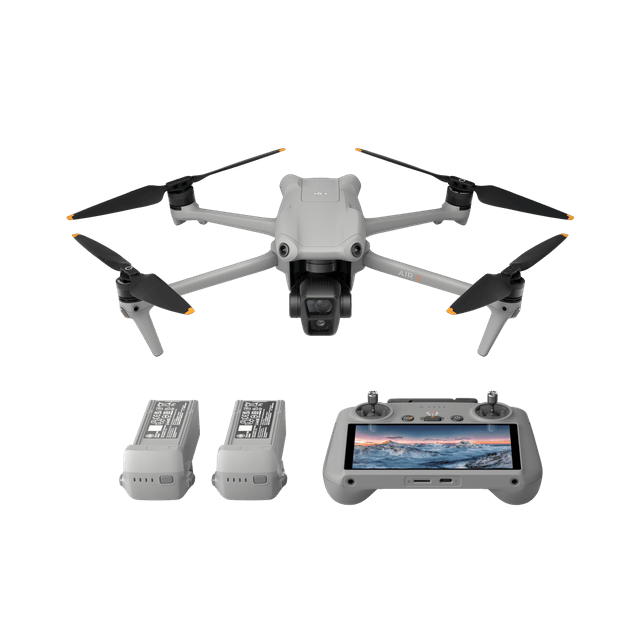
DJI Air 3, with its advanced features and superior camera performance, comes at a higher price point, but suits enthusiasts and professionals looking for the best possible performance from a portable and lightweight drone.

Conclusion
Choosing between the DJI Air 3, Mini 3 Pro, and DJI Air 2S ultimately depends on your specific needs and budget. If portability and affordability are your top priorities, Mini 3 Pro is a solid choice.
However, if you value outstanding camera performance, obstacle sensing, and advanced features, DJI Air 3 is the clear winner. Consider what you want and need from a camera drone and how that stacks up to the features discussed above, and you should be able to make a suitable decision based on your preferences and budget.
Whichever drone you choose, all three offer exceptional quality and functionality that can easily elevate your aerial photography and videography experience, and give you footage of your next adventure that you'll love.


